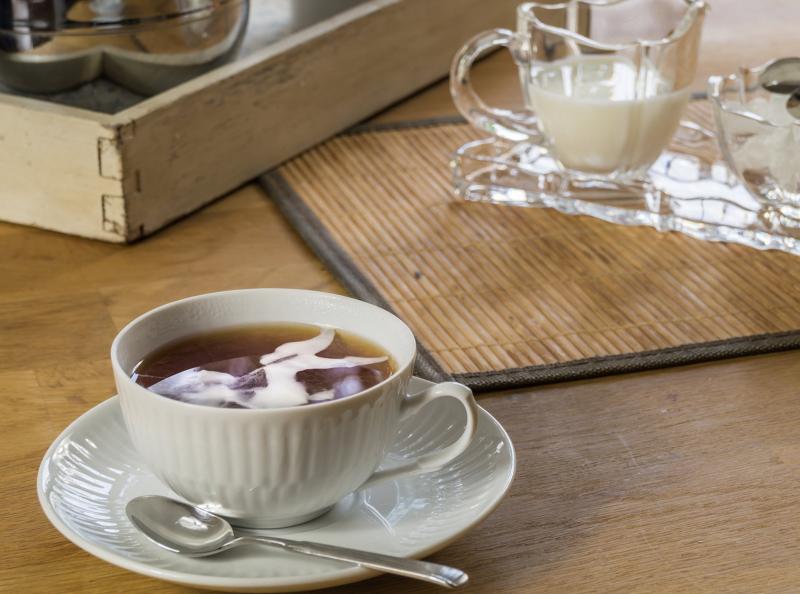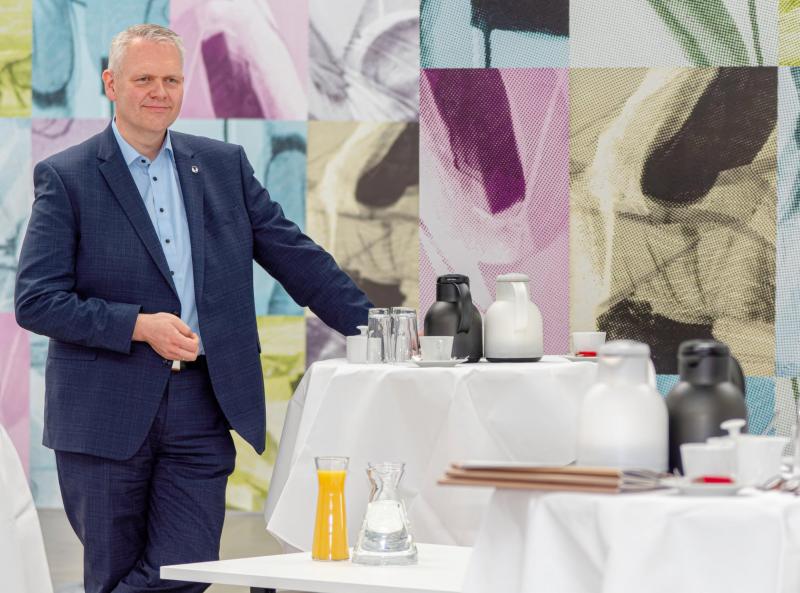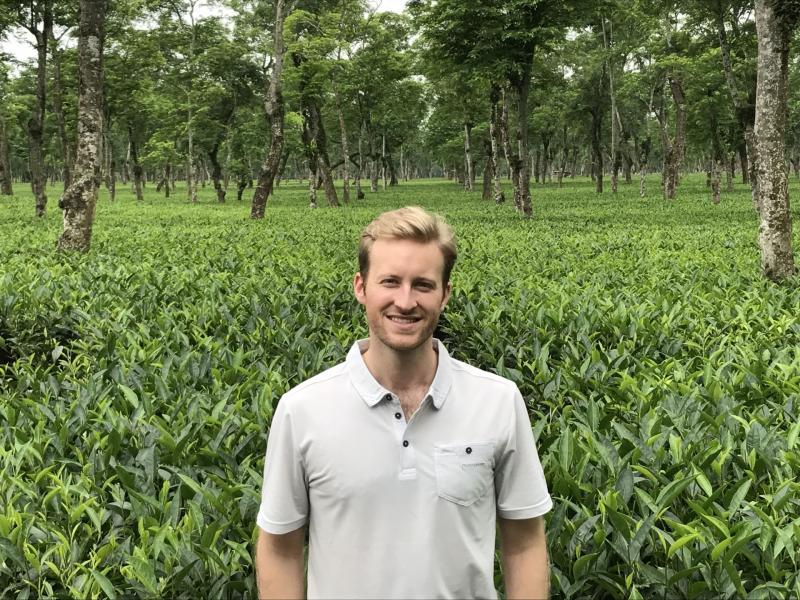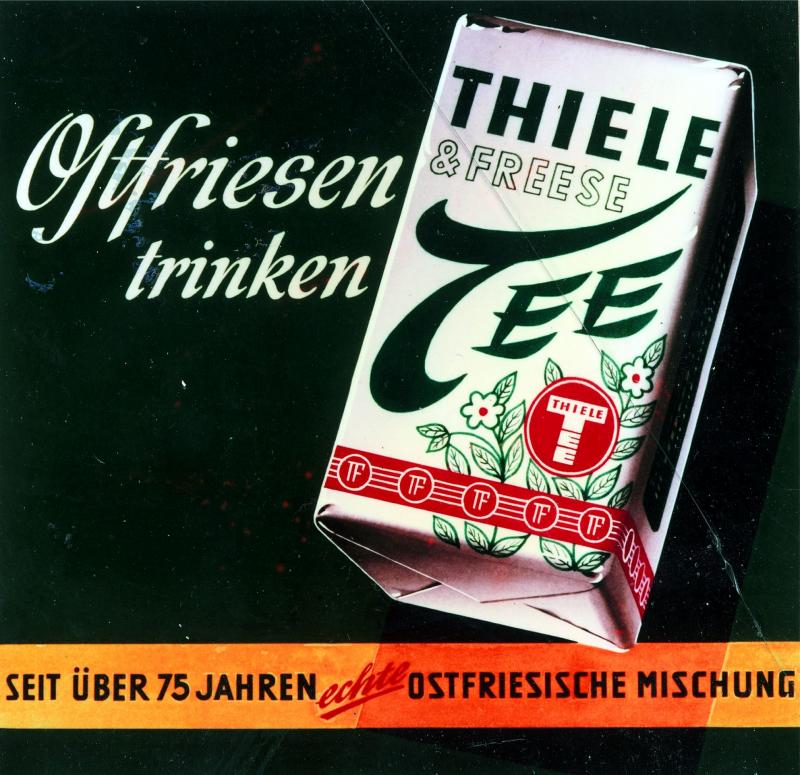Most countries have a city or region which has gained a definitive reputation for their beverages. In America, Seattle is synonymous with coffee, while Milwaukee serves up beer, and the Napa Valley produces fantastic wines. In Germany, Bavaria is known worldwide for its beer, while the East Frisian region in the state of Niedersachsen (Lower Saxony in Germany) is the unofficial home of tea and tea drinkers. It is one of the most vibrant tea-drinking regions in the world, according to some.
Statista ranks Germany 17th in their list of tea-drinking countries, but according to The German Tea Association, East Frisians consume nearly 300 liters (79 gallons) per capita a year. That bests the national rate of consumption of the English by 100 liters! In fact, Frisians drink, on average, more tea than anyone else in the world. They typically drink strong black tea comprised mostly of Assam leaves with a hint of Ceylon or Sri Lankan tea added to the blend. It is served in porcelain teapots with a small candle cradled beneath, as a way to keep the tea warm.
To gain a better understanding as to why this region remains the heart of German tea consumption, World Tea News asked two local authorities to give their expert opinions. Cultural minister of Niedersachsen (Lower Saxony, which includes the East Fresia region) Björn Thümler was generous with his time providing societal insight, while the current head of Thiele Tee Company (one of Germany’s oldest and most respected tea merchants), Lennart Thiele, provided background on their business practices. In the course of this article, culture minister Thümler also describes the special way East Friesians mix and consume their tea.

Q&A with Björn Thümler
Science and Culture Minister Björn Thümler has been serving the state of Niedersachsen (Lower Saxony, a state in northwest Germany bordering the North Sea with eight million inhabitants) since 2017. Born in the hamlet of Berne, near the Weser River, the energetic 50-year-old still resides there when not taking part in Government tasks or sitting on boards of multiple museums and charitable organizations.
Question: Is there a tea event or festival that’s dedicated to tea in East Frisia?
Answer: To begin with, tea is essential and existential for East Frisia. It is why I am very happy East Frisian tea culture was included in the national register of intangible cultural heritage in 2016. Now for your question, the East Frisian Tea Museum in the city of Norden should be mentioned. There you will find all the information about tea culture in East Frisia, and even around the world. A visit is always worthwhile because you come out of the museum smarter every time. Otherwise, the East Frisian tea culture does not need any festive occasions. The “Teetied” [or tea time] is part of East Frisian sociability and everyday life, and not only in East Frisia.

Question: Do you drink tea more on social occasions, with friends or business partners, or for pleasure?
Answer: I drink tea every morning. Tea is, of course, also consumed at social events, but especially if they take place in East Frisia. In the rest of the country, far less tea is consumed. The average East Frisians drinks over 288 liters [76 gallons] per year. In the rest of Germany, the average is at only 28 liters [7.4 gallons].
Question: At what age do people in East Frisia start drinking tea?
Answer: Since drinking tea is an integral part of family life in East Frisia, the children learn at an early age what importance is attached to drinking tea. Namely, the cozy get-together. The “Teetied” is like taking a little break and is also popular outside of East Frisia. Just a time to relax!
Question: What makes tea so popular in East Frisia? Is it just tradition that is passed on from generation to generation?
Answer: Due to the sometimes cold or windy weather conditions in the region of East Frisia, a hot drink was probably just right for people in the 18th century, because they could warm themselves up. To this day, the “Teetied” is a living tradition and culture in East Frisia. Drinking tea is to be seen as an element of community, in the family, among friends, among colleagues and on festive occasions. Strong black tea is poured onto a piece of white rock candy in thin-walled porcelain cups, and the short break begins with the soft crackling that occurs. The cream, which is then poured into the cup in a circle – always counterclockwise – first sinks down and then rises as a cloud. The cream is poured counterclockwise into the cup with the cream spoon and, in a figurative sense, stops the time for the tea break together. This tradition is passed on from generation to generation, but also to newcomers and guests.
Question: Is tea used to draw for tourists or consumers, especially since England is just across the channel?
Answer: In a sense, the East Frisian tea culture is an elemental part of the East Frisian way of life. Tea has been part of life here for 300 years. One should look at the Dutch and Frisian long-distance trade, which brought goods from the Far East to the North Sea coast early on. The British influence is rather low.
Question: What goes well with East Frisian tea?
Answer: Depending on the household, tea cakes mostly. Or “Krintstuut,” a sweet yeast bread buttered and topped with currants.
Question: Is tea a drink for you at any time of the day, or do you prefer it at regular intervals in the morning or evening?
Answer: In East Friesland, you drink tea at any time of the day or year. I drink tea in the morning and, if an option at places I visit, in the afternoon.
Question: What would you like to tell the global tea industry about your region and their love for tea?
Answer: Tea is fundamental to all East Frisians. Consistent quality is just as important to us as its ecological cultivation, and the consideration of social standards for the tea farmers. Otherwise, the tea doesn't taste really good.
* * *
Q&A with Lennart Franz Thiele
Lennart Franz Thiele, of Thiele Tee, took over the management of the Emden based company in 2019. Filling the sizable shoes of Franz Otto Thiele, who headed the company since 1985 before passing away at the age of 100. Lennart Thiele is the fourth generation of Thiele to run the firm, tasked with keeping it a family run operation. Given his extensive knowledge of both domestic and foreign tea trade, he is instrumental in shaping the future of the company and East Frisian tea.

Question: Where do you import your tea leaves from?
Answer: We import our “Originaltees” product line mainly from the North Indian state of Assam, during their best harvest time – the so called “second flush” period. Since 1873, our Emden based family company has personally vouched for the highest quality through family ownership. With our purchases, we pay special attention to only import the highest quality leaves, and order a sufficient amount to ensure we have enough stock to get our production through the next year’s harvest in case of a supply chain interruption. Tea does not have a specific expiration date, so it will not go bad in our specialized storage facilities. We keep an eye on an even inventory turnover to ensure quality.
Question: How do you market outside of East Frisia, in other parts of Germany, and do you ship internationally
Answer: We sell in traditional grocery stores, no discounters, and private tea shops as well as specialty stores all over Germany. Currently, we do not export for large trade outside Germany. We deal in highest quality, no compromises, delivering the best value for money, the best blends. The real East Frisian tea. We also buy organic and fair trade alongside our conventional goods. The best quality of mixes is the top priority.
Question: Your core consumer base remains in East Frisia then?
Answer: Our customer base is mainly people who demand quality, or a refined taste market. Our region can support that, as its consumption is 13 times the national average when compared with German norm consumption. In addition, we have private customers all over Germany, and abroad via our web portal. There are tea lovers in America, in Iowa for instance, and there are a lot of people of East Friesian heritage.

Question: What makes East Frisian tea special?
Answer: Here, tea is a cultural asset with over 450 years of history, and our tea ceremony is an intangible cultural heritage which has made it onto the German UNESCO world heritage list. For us, tea stands for much more than a staple item – tea is our regional drink. Tea is lived identity, is hospitality, togetherness, is talking and being silent, is the beginning and the end of the day. It is enjoyment.
To learn more about Thiele Tee Company, visit Thiele-Tee.de. To learn more about East Frisia, click here.
Martin Mulcahey is a freelance writer based in Colorado Springs, Colo., who’s highly sought after in the sports industry. He routinely covers sports, sporting events and health-related topics, in addition to travel, books and music.
